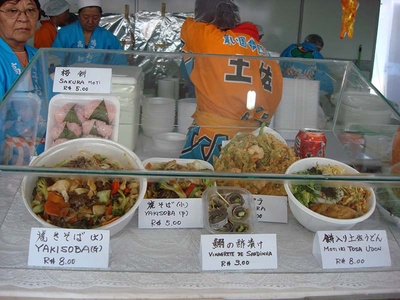My mother likes feijoada, while my father likes bacalhoada. As for third-generation me, as a kid I liked natto.
This is the first time I’ve said that. I’ve finally said what until now I’ve had to just keep to myself.
Why? Because it’s only recently that Brazilians have become familiar with Japanese food culture.
When I was in elementary and middle school in the 1960s, Japanese students were ridiculed and told “Japanese people eat raw fish and uncooked vegetables, right?”
I remember one incident at the first school I worked at. A female cooking teacher told me directly, “You guys are strange. You eat rotten beans! What’s good about that? What a bizarre taste in food you have!”
Well, it just so happened that was a food I loved, so I couldn’t say anything in rebuttal. I was still young, and maybe I didn’t have the courage to debate with a colleague. That was over 30 years ago now.
The other day, I went to a Japanese festival and was surprised. More than taiko drums or anime…more than a showroom of Japanese cars…more than flower arrangements or tea ceremonies…what garnered the most attention were the Japanese food stands.
The lines for yakisoba, tempura, and okonomiyaki went on forever. Brazilians, Japanese-Brazilians, kids, the elderly, young people…everyone waited patiently in these long lines.
I got in the line for the “Hiroshima-style okonomiyaki”. The person right behind me was a Brazilian girl who was a greater connoisseur of okonomiyaki than any Japanese person. She was expertly explaining it to the 5 or so friends that were with her. And I was shocked – her explanations were spot on.
I think credit for this surprising Japanese food boom goes to the mass media. Popular actors and singers have been attesting to how much they like Japanese food, and scenes set in Japanese restaurants on Brazilian TV shows have been increasing.
It’s being said that Japanese food is healthy and good for dieting.
The times sure have changed. In the past, there I was afraid of how people would look at me if I said “I love natto”. This boom in Japanese food is absolutely amazing. Today, even the blue-eyed children of 4th-generation Japanese-Brazilians are proudly eating natto or putting furikake on white rice. Japanese food is the best!
© 2011 Laura Honda-Hasegawa






